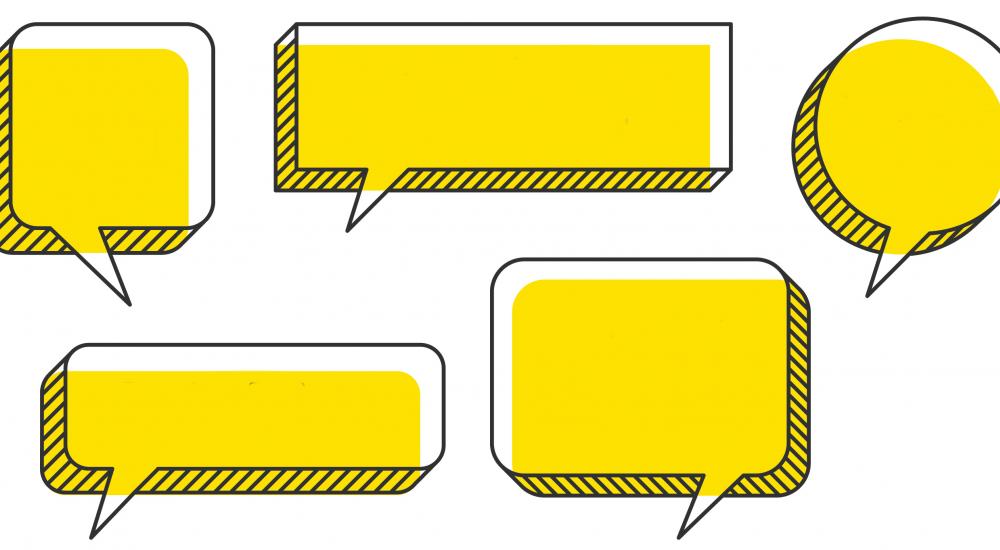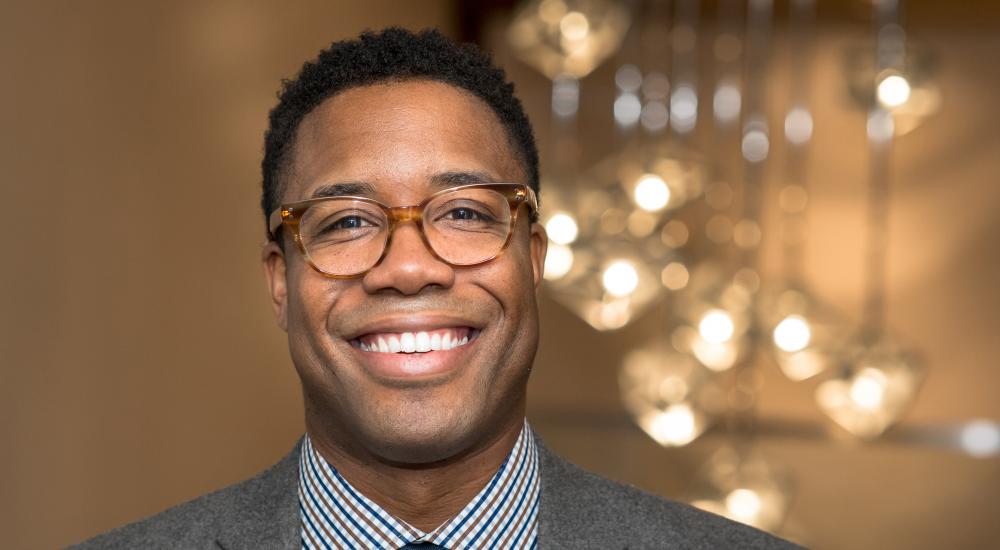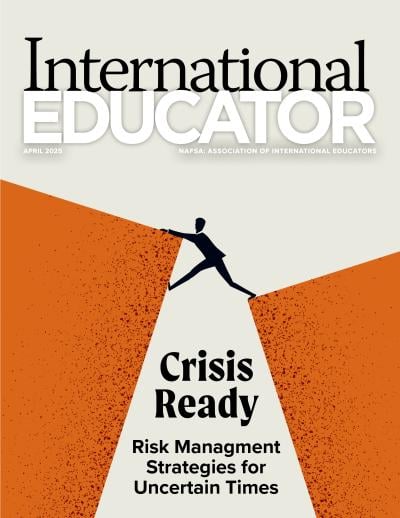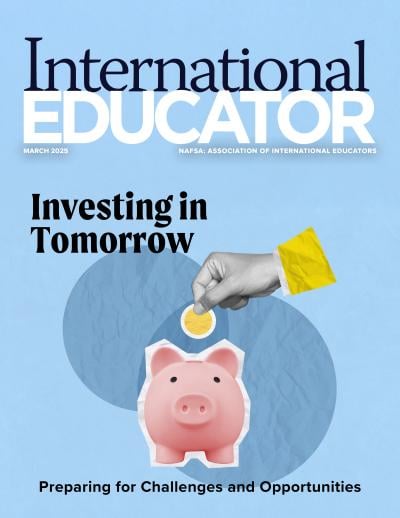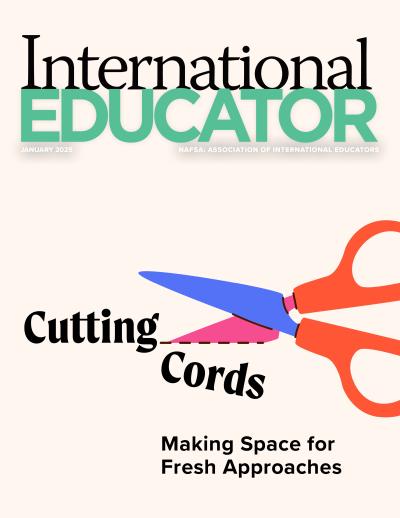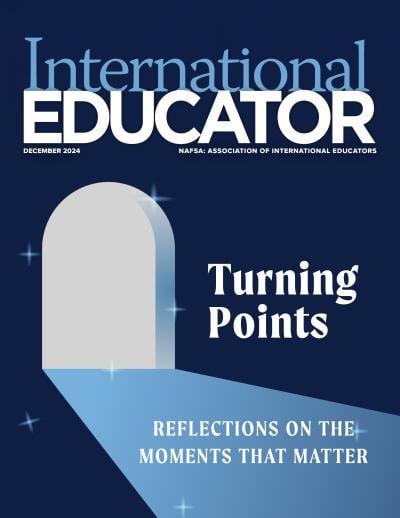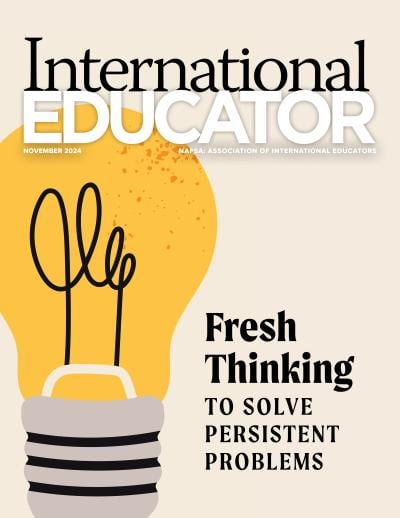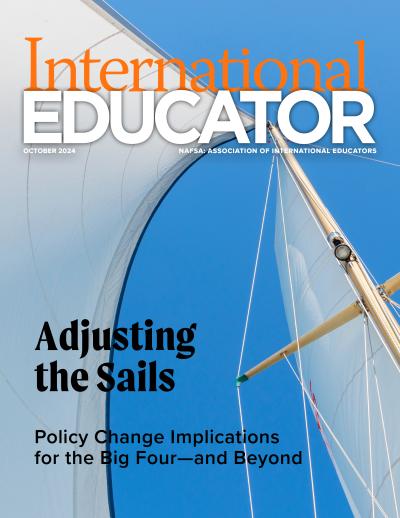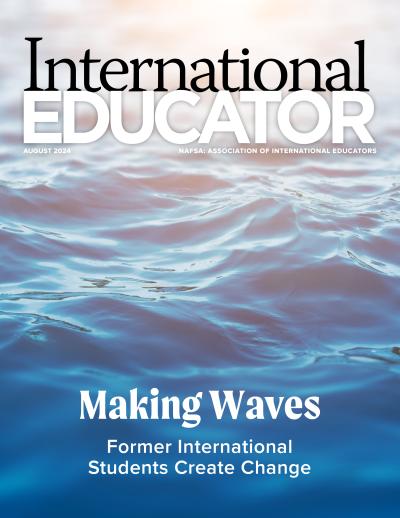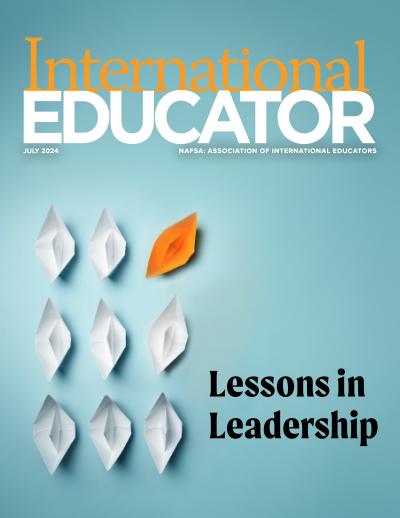Four Ways to Create a Culture of Belonging in the International Office
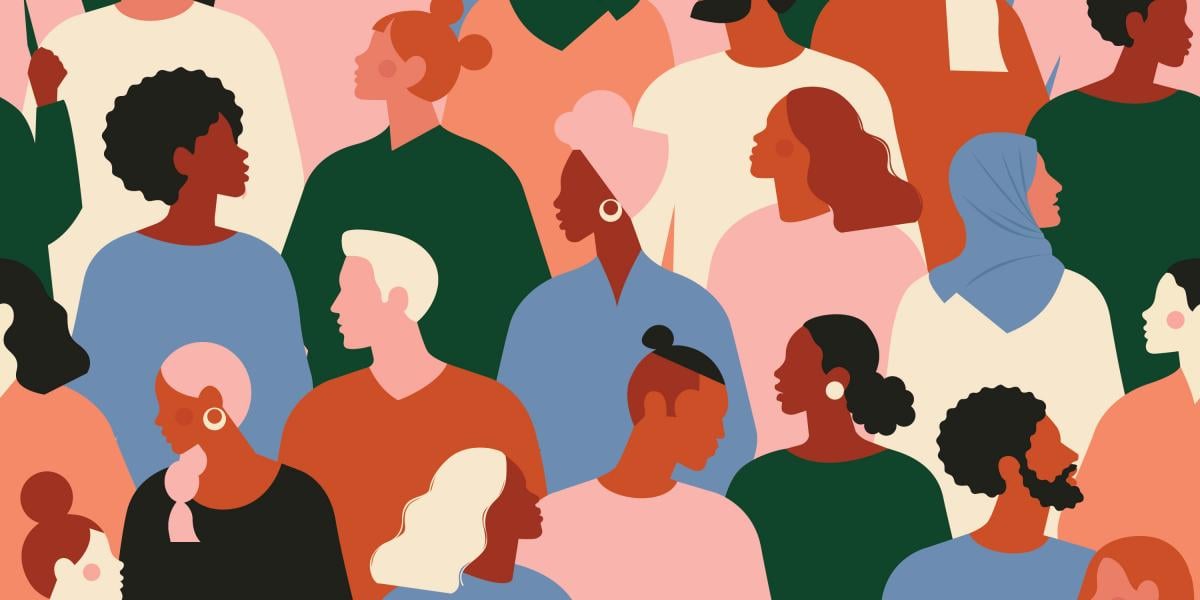
Following the twin crises of a global pandemic that exacerbated existing disparities and a demand for racial justice following the murder of George Floyd by police officers in Minneapolis, almost every industry has faced a call to look at its own commitment to diversity, equity, and inclusion (DEI). International education is no exception. While much of the DEI work in the international office focuses on increasing diversity in education abroad and fostering dialogue between international and domestic students, an equal amount of attention should be paid to diversifying the field as a whole.
Before international office staff can help students understand and address implicit bias and racism, they must first do the work around addressing these issues themselves. Creating an inclusive office is a prerequisite for recruiting a diverse staff and often must be done in collaboration with other campus units.
“We as professionals have to learn how diversity, equity, and inclusion impacts us as individuals, our role as international educators, and the students we serve,” says Andrew Gordon, founder and CEO of Diversity Abroad.
According to Gordon, DEI work in international offices starts with leadership. “DEI is an area for leadership development in international education as a whole,” he says. “By that I mean really looking at our entire operation and understanding how we as leaders are championing diversity, equity, and inclusion in what we’re doing, who we’re hiring, and how we’re training our staff.
“If you don’t have the right culture—one of respect, recognition, empathy, trust, and dignity—the students who are coming in are going to feel it.” —Kelechi Kalu
Promoting diversity, equity, and inclusion in the international office is key to recruiting and retaining both staff and students, says Kelechi Kalu, PhD, political science professor and former vice provost of international affairs at the University of California-Riverside.
“If you don’t have the right culture, your strategies will not work,” he says. “If you don’t have the right culture—one of respect, recognition, empathy, trust, and dignity—the students who are coming in, the scholars who are coming in, they are going to feel it.”
Here are a few steps that senior international officers (SIOs) and other leaders can take to begin creating a culture of diversity, equity, and inclusion among staff—and, therefore, for students.
1. Understand where DEI and international education intersect.
Despite the fact that they are often siloed on campuses, DEI and international education have many areas of overlap. “If you think of them as two separate spheres of a Venn diagram, in the middle of those spheres is cultural humility and intercultural understanding,” says Eduardo Contreras, EdD, assistant provost for international education, diversity, and inclusion at the University of Portland in Oregon.
“This idea of understanding who you are, vis-à-vis the people around you, starts with you as an individual,” says Contreras. “The work starts individually, and it’s often some of the hardest work to be vulnerable to acknowledge what privileges you have, to name it, and to provide space for the voice of the folks who are on the margins.”
SIOs need to be involved in unconscious bias and other DEI training, says Gordon, which involves recognizing their own biases. “Being a leader of an organization doesn’t immunize us from bias, and so we need to check that and see how that might be reflected in our leadership styles,” he says.
At Tennessee State University, Jewell Winn, EdD, serves as both SIO and deputy chief diversity officer. She says that people are often reluctant to raise their hands when she asks, “How many of you have biases?” when she does DEI training.
“It’s a natural human instinct for us to be biased,” she says. The goal of training is “learning to acknowledge what those biases are, and doing what we can to minimize bias so it doesn’t become harmful or discriminatory to someone else.”
Contreras gave a workshop for residence life staff at the University of Portland in January about implicit bias in hiring, which is also applicable to international offices. Hiring managers need to be aware of the concept of institutional racism.
“Even though the individuals on committees aren’t themselves racist, or say they’re not racist and indeed believe that, there are aspects of the system that are set up for certain communities—[for] White people to succeed and for communities of color to fail,” he says. “You have to work to fight against that on an individualized level and then later on an institutional level.”
2. Approach the work with cultural humility.
In building relationships with the DEI office and other units on campus, international offices need to learn how to “approach with humility,” says Michael Reid, independent consultant and former director of global outreach and engagement and international recruitment at Eastern Washington University.
International educators need to understand their own positionality and recognize the limits of their expertise. “There are so many international offices staffed by predominantly White people, especially in leadership, who...don’t have this lived experience, but have done these ally trainings,” he says. “But you need to know what you don’t know.”
“International education evolved from a space of privilege in higher ed, whereas a lot of the DEI endeavors that we’re seeing today that are so beneficial to universities emerged out of the civil rights movement in the 1960s.” —Eduardo Contreras
Similarly, Contreras advocates for “a shift towards cultural humility” instead of the default focus on “intercultural competence.” International educators often believe that because they work with international students, they also understand diversity, equity, and inclusion. But international education often comes with some degree of privilege, he says.
“Maybe you don’t understand [the experience of] an undocumented student, who’s from just up the road, but whose parents had to immigrate here from another country, and who doesn’t have the financial resources that some of your students have,” he says.
As a result, tension can arise between DEI and international education. “International education evolved from a space of privilege in higher ed, whereas a lot of the DEI endeavors that we’re seeing today that are so beneficial to universities emerged out of the civil rights movement in the 1960s,” Contreras says.
3. Find resources outside of your office.
Contreras advises international offices to look toward DEI offices with the goal of partnership. In many cases, those offices are responsible for implementing diversity, equity, and inclusion practices across campus.
“Look at those offices as support for the work that we’re going to do versus them executing that work,” he says. “They can support international offices in better understanding the campus’s vision around diversity, equity, inclusion; [sharing] tools and resources that other units might be using to execute this work; providing guidance on initiatives that the international office is taking; [and] helping better understand the student population at that particular institution and what some of the challenges have been.”
These partnerships should be mutually beneficial. When international offices approach partnering with DEI offices with a posture of supporting the latter’s goals, efforts tend to be more successful, says Contreras.
For campuses that do not have DEI offices, Winn suggests reaching out to colleagues at other institutions, including historically Black colleges and universities (HBCUs). As Winn explains, she does not mind talking about race and racism with White colleagues, but “you’ve got to be willing to hear me. I’m not going to say what you want me to say.”
Just as international office staff encourage students to educate themselves, international educators should take the initiative to learn about these issues—not demand more time, energy, or resources from DEI colleagues or for peers at HBCUs to provide the education for them.
“I think that’s what’s been prohibitive for a lot of us when we’re having these conversations,” says Winn. “People are looking for a certain answer. That’s not why I want to talk to you. I want you to talk to me because I want you to hear me. I want you to hear the pain. I want you to hear the struggles that we’re dealing with as senior international officers at our HBCUs.”
4. Create an inclusive workspace with a culture of belonging.
Not only should SIOs offer group workshops that bring the international office together for these conversations, they should also offer individual professional development opportunities related to DEI. Investments in such opportunities signal that DEI is valued and seen as critical to the operation of the organization.
“As leaders, we need to lead by example,” Gordon says. “And make sure our teams realize [that DEI] is an important aspect of their work, and that it is something that we are holding our office accountable to.”
Leaders also need to realize that diversity and unconscious bias training “is not a panacea. It’s not like, ‘Hey, we did unconscious bias training, we’re good. As with all things, this is a continuum. And we’ll all continue to learn and develop in different ways,” Gordon adds.
A Holistic View of Inclusivity in International Education
Creating an inclusive workplace is a challenge for the international education sector as a whole. All students need to see people who look like them in the offices that serve them.
“We have such a passion and desire to support students that a good portion of our professional development of our work is focused on students and not as much on who we are as professionals in this space,” Gordon says. “I think there’s an opportunity for us to take a step back and say, ‘How is my office ensuring that our workplace is a place that has a culture of belonging?’” •
Additional Resources
About International Educator
International Educator is NAFSA’s flagship publication and has been published continually since 1990. As a record of the association and the field of international education, IE includes articles on a variety of topics, trends, and issues facing NAFSA members and their work.
From in-depth features to interviews with thought leaders and columns tailored to NAFSA’s knowledge communities, IE provides must-read context and analysis to those working around the globe to advance international education and exchange.
About NAFSA
NAFSA: Association of International Educators is the world's largest nonprofit association dedicated to international education and exchange. NAFSA serves the needs of more than 10,000 members and international educators worldwide at more than 3,500 institutions, in over 150 countries.
NAFSA membership provides you with unmatched access to best-in-class programs, critical updates, and resources to professionalize your practice. Members gain unrivaled opportunities to partner with experienced international education leaders.




